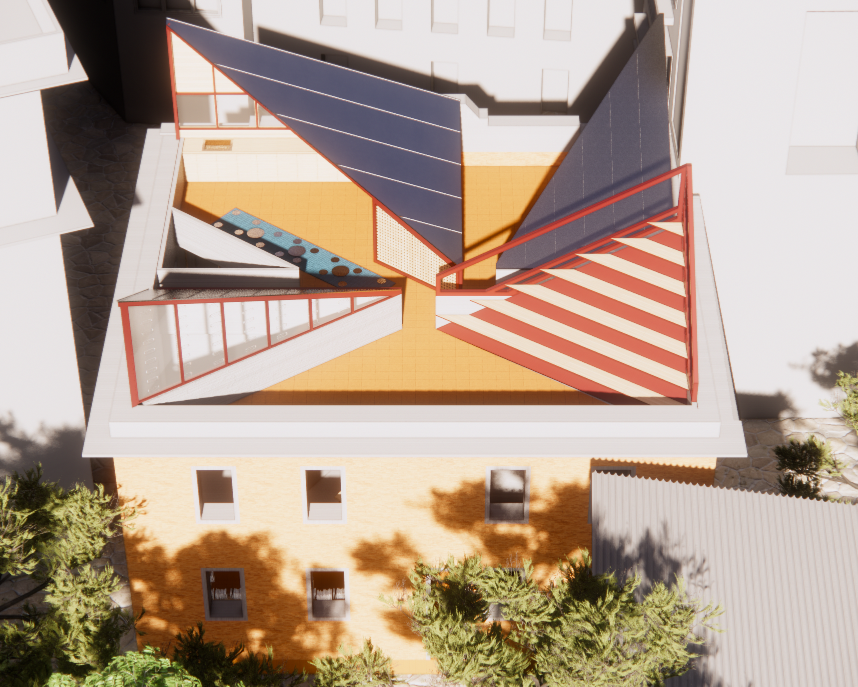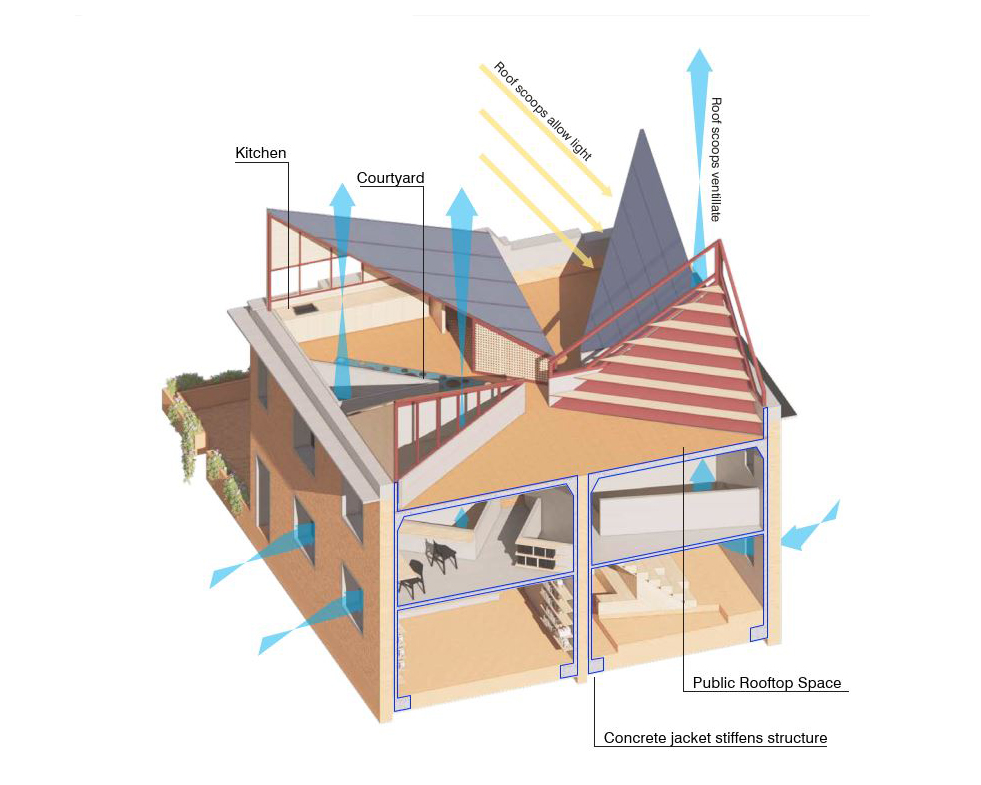Community Infrastructure Prototype
We have
developed a design strategy to transform disaster prone buildings into
essential community infrastructure. The design deploys a thin, stabilising
concrete jacket to stiffen existing masonry buildings and protect them from
future seismic events. The preserved structure will provide the necessary space
for community gathering and other programs, such as library and healthcare
provision. The design creates new roof structures providing public spaces for
gathering and increasing natural light and ventilation to the rooms below.
The aim
of this project is to demonstrate how unsafe buildings can be upgraded into
earthquake resilient community spaces.
︎︎︎
Back to Nepal Projects




